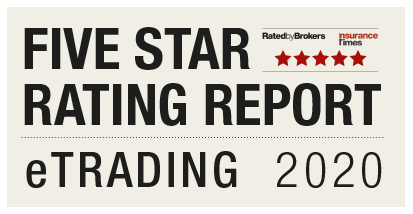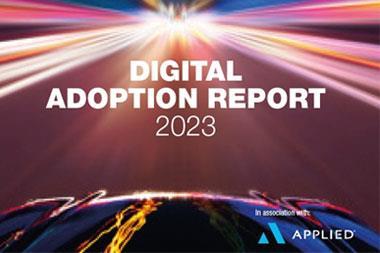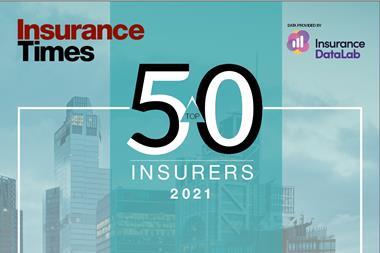NIG has spotted an increase in inbound calls at its etrade operations and claims centres with many brokers seeking guidance on policy coverage during the coronavirus crisis, Insurance Times etrading 2020 results are also now available
Q1: Since the outbreak was declared a pandemic, what impact are you seeing on the platform/system from brokers?
The biggest impact we’ve seen is a significant increase in inbound calls and email traffic at our etrade operations and claims centres. Much of this has been brokers seeking clarification on policy coverage in light of evolving guidance from the UK government. To help with this, we’ve published a set of regularly updated FAQs. However, our teams remain on hand to answer any specific broker enquiries by phone, email or LiveChat.
Q2: What does your company see as the advantages of extranet over software houses, and/or vice-versa?
We view extranet and software houses in the same way, it’s important to us to give our customers choice when etrading with us. They’re trading platforms enabling brokers to self-serve our etrade products. They’re both part of our single etrade value proposition that gives brokers the choice to either work with us directly via TheHub, or indirectly through a software-house hosted panel of insurers. Each has different advantages, so we want to make sure our etrade products are available cross-platform.
Q3: What are the major challenges facing the insurance industry on e-trading this year?
Firstly, the feedback from brokers in the Insurance Times etrading survey highlights the need for insurers and software houses to make it easier for brokers to get a ‘fair presentation of risk’ via eTrading platforms. And doing so without having to deal with an underwriter. This way, brokers can move from ‘risk capture’ to issuing policy documents in one step during one client conversation.
Secondly, more brokers using their digital trading experience in personal lines and commercial etrading to create broker-to-customer (B2C) websites.
The aim: to enable clients to self-serve, while achieving benefits for broker and client. The challenge for insurers is to make sure these broker-owned and run trading platforms use good quality risk-capture data. That way, clients receive the right advice and guidance, and their level of cover is appropriate for their requirements and claims experience.
Thirdly, there’s a desire from brokers to etrade higher premium cases. Traditionally, these would require talking to an underwriter – either due to the complexity of the risk or because it’s outside an insurer’s etrade appetite. While the use of AI, machine learning and integration of third-party data sources can reduce online form filling, the challenge for insurers is identifying when an underwriter needs to step in to apply experience and local knowledge to make a decision.
Q4: The Insurance Times etrading 2020 results are now available, what is your reaction to your results?
We’re really pleased to retain five stars for both extranet and software houses. It shows our etrade proposition continues to strike a chord with brokers and we’re grateful so many took the time to complete the 2020 survey.
However, we know that now is not the time to rest on our laurels. It’s clear other insurers have been investing in their etrade capabilities, too. So we’re working through the valuable insight from the survey results: etrade appetite, speed of response, and multi-channel contact strategy are three themes coming across loud and clear. We’ll be using this feedback to continue to improve our products and proposition plans for 2020 and beyond.
Q5: Business continuity is essential in these disruptive times especially through etrading, how are you ensuring your broker customers remain operational from home?
We decided to move our etrading operations from office-based to home-working a few weeks ago, just as our brokers were doing the same. Despite the scale of the task, we were well prepared thanks to our own regularly reviewed, rigorously tested, and comprehensive BCP. It’s a credit to our people how well they embraced the challenge. For our operational teams, it’s very much business as usual. They can still access all our core-business applications and systems from home, including LiveChat and telephony, during business hours.

And thanks to our regional branch network and relationship management teams across the country, we’re still providing high levels of service with minimal disruption.
Obviously, there have been challenges, but through good collaboration and clear communication across NIG, we’re rising to challenges quickly, to ensure our brokers and their customers receive the high levels of service they’ve come to expect from us.
One of the benefits of etrade is that our extranet (TheHub) and software house trading platforms are web based. Brokers can log on, manage workflow, and complete transactions on desktop, laptop, tablet and mobile devices in the same way they always have.
Q6: Automation, AI, machine learning, block-chain and advanced analytics are just some of the innovations being speedily implemented worldwide to combat disruption caused on businesses. What developments have you made so far and what plans are being made for future implementation?
At NIG, we regularly appraise the external technology and fintech market. For us, adopting new technology comes down to a simple question: Does it add value to brokers and their clients? We’re currently exploring several initiatives around automation, AI integration, machine learning and advanced analytics with other brands in Direct Line Group, as well as our technology partners.













































No comments yet